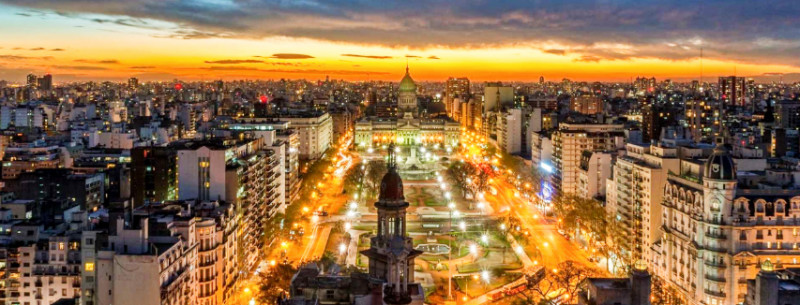
1st June 2019
LAS CAÑAS, URUGUAY. A campsite too expensive for what it was – relatively speaking, that is. I may as well take off to Argentina so I packed away and hit the road. The Customs and Immigration post sits on the Uruguayan end of the General San Martin International Bridge. Both countries were dealt with in one go, a stark contrast to the border town of Ponta Pora /Pedro Juan Caballero on the Brazil/Paraguay border – where four offices were scattered anonymously around the town. Why not share border offices like this one? It’s not like you can live in the space between.
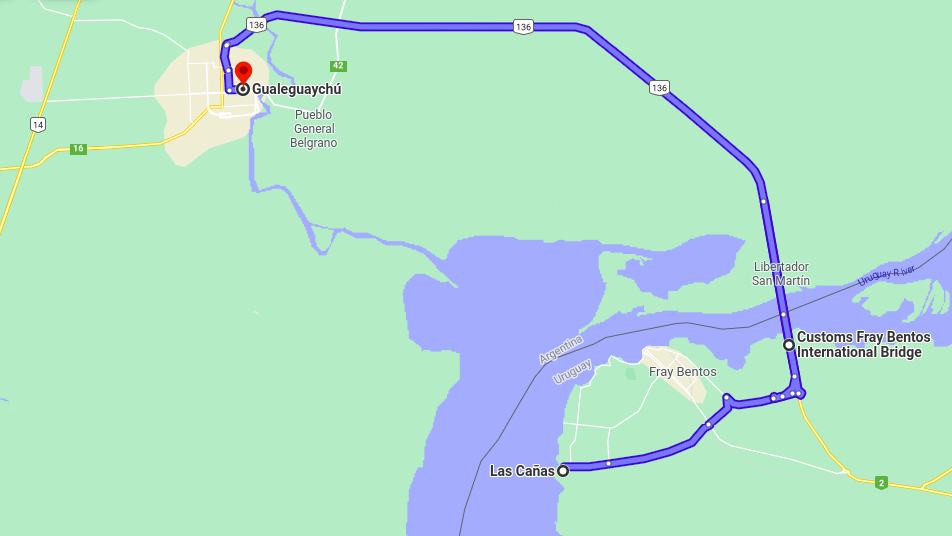
Nothing was asked about insurance and I saw no Bureau de Change either and sped away over the one-mile span across the mighty Rio Uruguay for my first ever step into Argentina. Tantalising glimpses of “The Land of Silver” had been flirting with me since Asunción in Paraguay and following the border around to Foz de Iguaçu in Brazil.
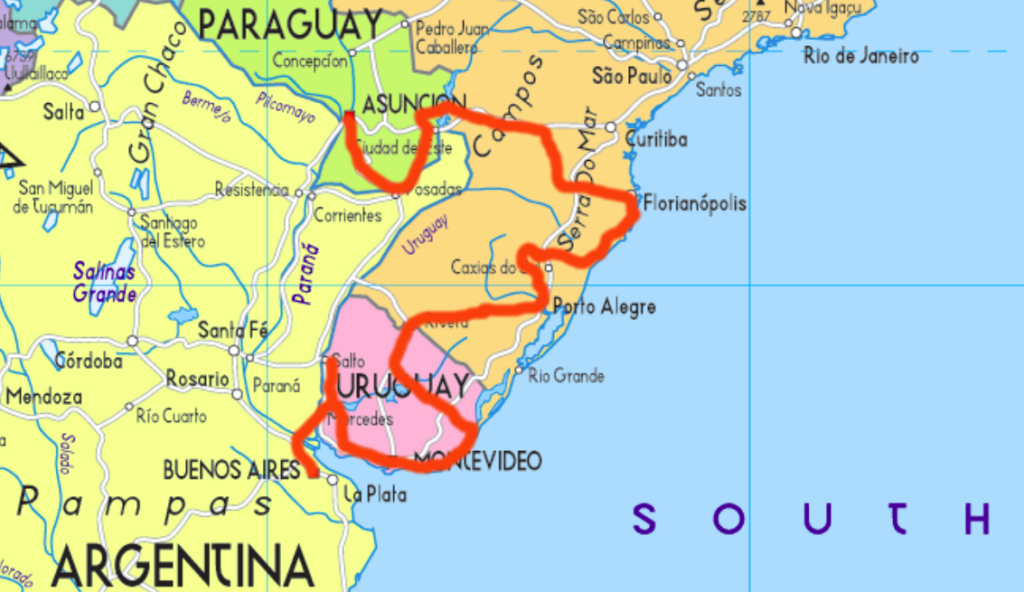
Bright and cold, chilly weather was to be expected just three weeks away to the Winter Solstice. The lens fogged up on the GoPro spoiling the view across the river.
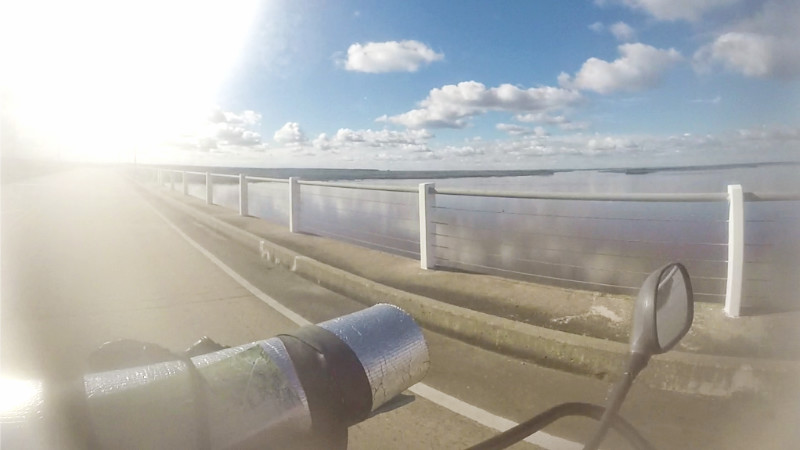
Entering Gualeguaychú I was welcomed by a massive Carrefour Supermarket discretely nestled over the far side of its own massive car park. How European. Tonight, I would feast and I stocked up on some wine, pasta, salami and some crisps. Cashback at the checkout? No chance, not on international debit cards.
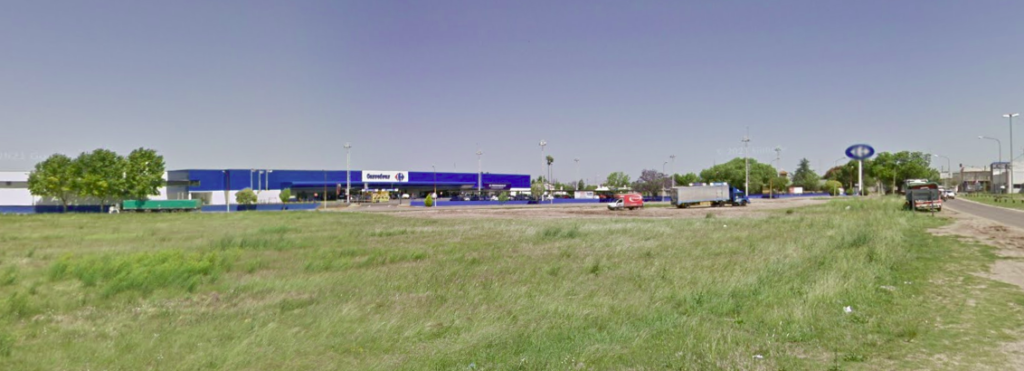
Gualeguaychú is a fairly big town, I suppose it’s a border town though not that close to the border. Arriving in unfamiliar cities in new countries is always fairly daunting. A new highway code, new signs, traffic signals, unfamiliar customs and even different levels of driver aggression. Need to be super alert piloting for the first couple of hours. The sun was low in the sky causing harsh black shadows and solar-white stripes across the road. Flip-up the visor for maximum view and blink away the tears caused by the cool airstream across my face.
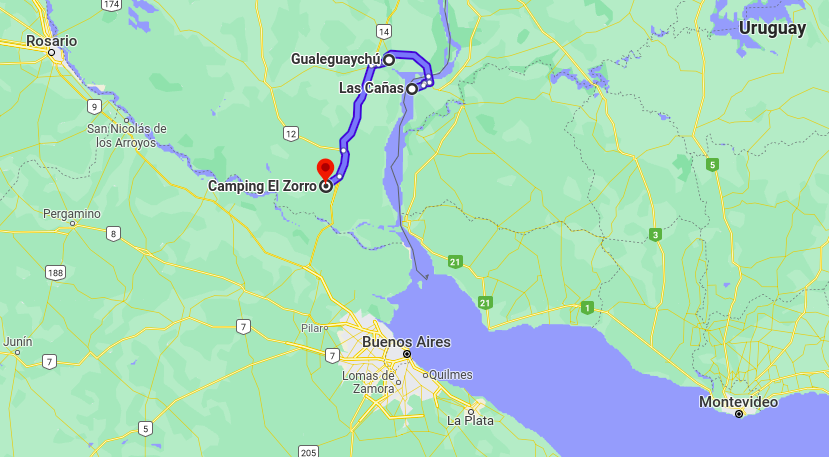
Ruta 14 merges Ruta 12 further south but is otherwise arrow-straight dual carriageway to Zarate for 150km then a left turn to Buenos Aires. I wouldn’t make it before dusk, that was for sure, so eyes peeled for camping opportunities along the way.
Problem number one: most of the land here is fenced off, flat flooded marsh and cattle fields. And the roads are elevated in places. So this is the low pampa: vast wetlands that funnel several giant rivers into the Rio de la Plata.
I had already checked out Ioverlander and El Zorro camping lay 95km south of Gualeguaychú and 10km off Ruta 12 along a gravel track. With a bit of luck, I could perhaps find a gateway along the track to pitch up for the night.
This relentless expanse of marsh provided zero options for quietly pitching a tent, even along the steep embankments and I pulled into El Zorro camping just before sunset. A quiet, rustic riverside campsite, seemingly popular with fishermen, flicking their lines out across the river’s silver surface that mirrored the golden sunset.
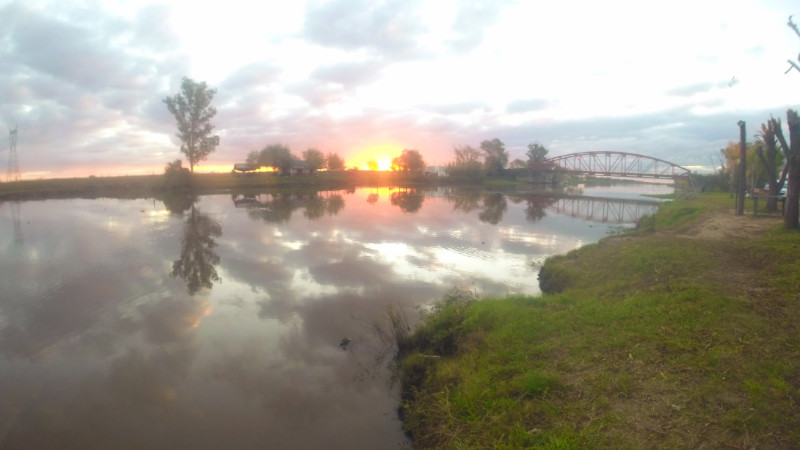
Checking in with the owner and already knowing the answer before asking if he accepted card payments, I showed him my wallet containing only Uruguayan pesos and, with a dismissive wave, he said I could stay for free “No es problema.” As grateful as I felt for that gesture, especially after the long search for a free pitch all the way here, I wanted to offer him something to symbolise my gratitude, so after unloading the bike I took him the bottle of wine I’d bought at Carrefour… I’d be happy with water for the night and pitched camp on the riverbank. .
2nd June
Peering under the tent flap, the morning had quietly broken under a soggy grey blanket of fog so I zipped up the flap and huddled in the sleeping bag, snoozing until noon hoping that the tent would dry out a bit and leave the air a tad drier for riding.
By noon, the air had cleared and the tent wasn’t quite as sodden. And I rolled it up t before retracing the gravel trail back toward Ruta 12 which annoyingly took me back north before joining the road. There’s something irritating about backtracking in the wrong direction…
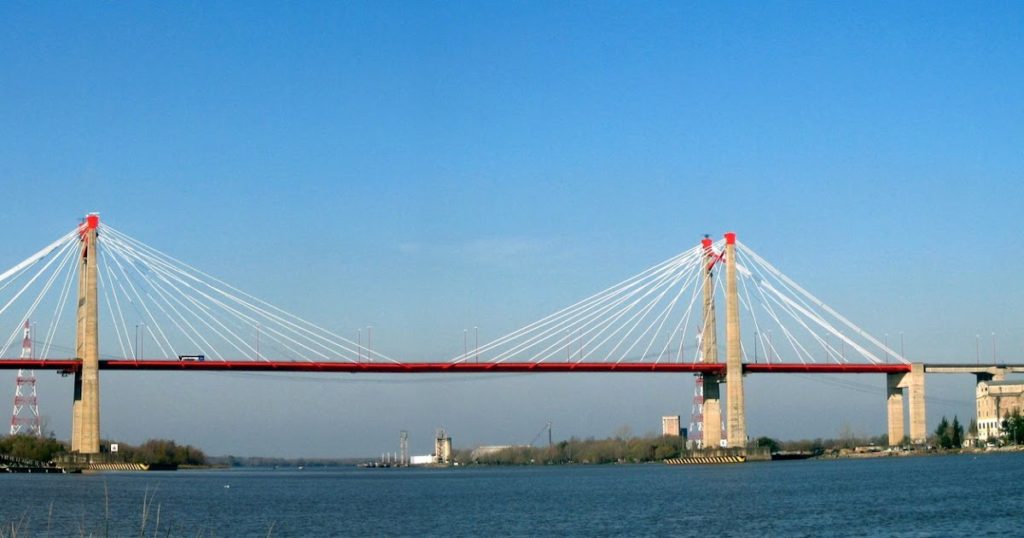
Hello! Huge bridges crossing the Rio Paraña Guazū and Rio Paraña: a confluence of a grand network of rivers converging in a massive delta before entering the Rio de la Plata. No wonder the fields were so wet. I guess this is where most of that rain in Paraguay and southwestern Brazil eventually ends up…

At the junction with Ruta 6 stands a huge YPF fuel station. A gleaming white monument to commerce and transport. Very modern with American Fast Food styling operated at a typically not so fast pace.
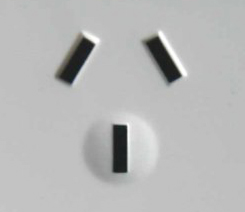
The power sockets were a shock. Type one slanted Australian style blades. Luckily, my old mate, Phil, lent me his travel adapter that twisted the connectors from US to Australian angles. Cafe con medialunas and a quick scan of the route ahead and I was soon Buenos Aires bound, southeast along Ruta 6 and 9. It looked easy enough: straight road to the City Centre.
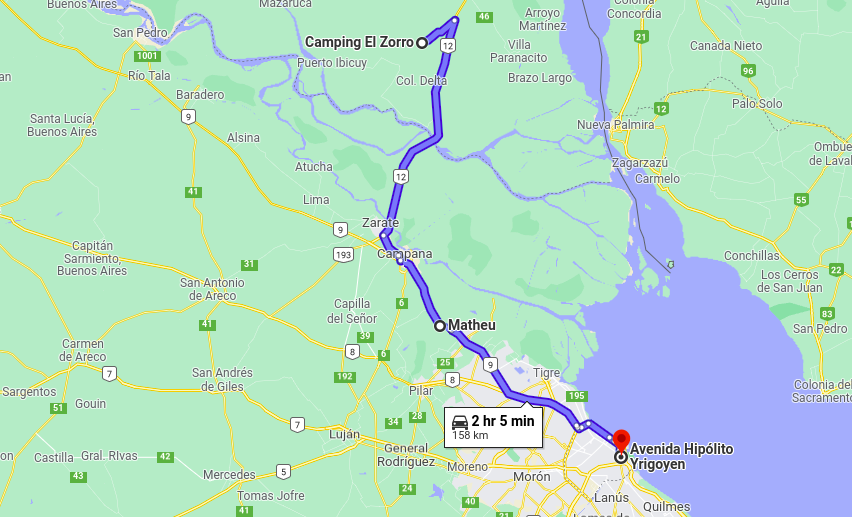
Autopista Ruta 9 flowed fast and London-like into Buenos Aires, hard to keep my bearings since the city is so large and difficult to think as well as monitor time and distance. Broad fast roads like this demand 360-degree vision.
A sudden and unexpected obstacle: a toll plaza… not free for motorcycles this time, as in previous countries, where a narrow alley filtered two-wheelers around a narrow path to one side, free of charge. No… what a hassle, stop, remove gloves, fumble for wallet or change while cars stack up behind… I had no Argentine pesos and offered Uruguayan. He kindly waved me on forgoing the 50 pesos – about $0.50.
This could prove a problem next time if and wherever there was another so I had to try and guess an exit before another toll plaza. The tension got too much and I exited just a few kilometres further on, not knowing where I was or how to get to the centre.
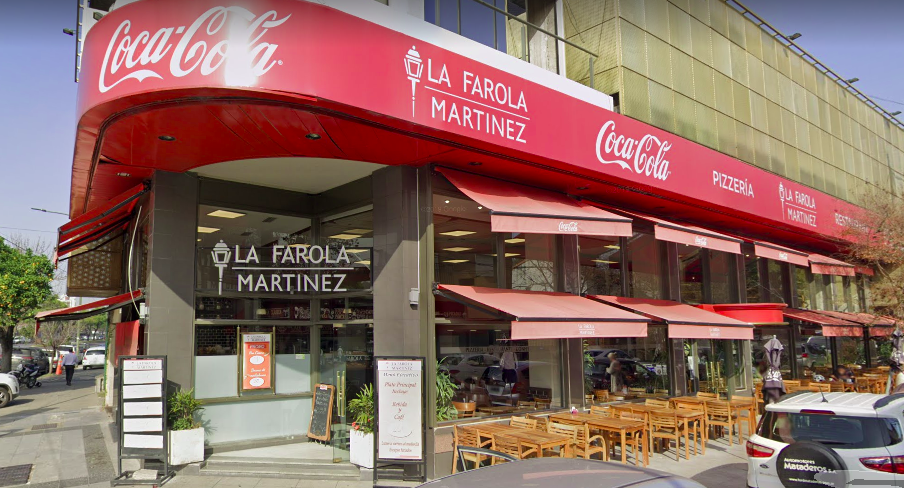
Houses and speed humps suggested I was still in the suburbs. I had landed too soon. I stopped to ask for directions from a girl at a bus stop. Popping out her headphones, she didn’t understand my Spanish and shrugged, so I took a guess at the direction to eventually find myself at La Farola Martinez Restaurant on Santa Fe. Coffee, cake and WiFi.
The tables with sockets were busy but I managed to stretch my power lead to a neighbours table, briefly interrupting their conversation. People hang around for ages in cafes. I booked a bed at Portal del Sur and am still 20km away. How vast is this city?

I hooked my gloves under the bungee. Dark now but not so cold in the city, I set off down Ave. Santa Fe. Busy traffic. Endless traffic signals. It’s hard to gauge distance with no GPS with stop-start traffic. After what seemed like an hour I stopped to check the map and ask a Policeman where we were. he told me still 8 km to go.
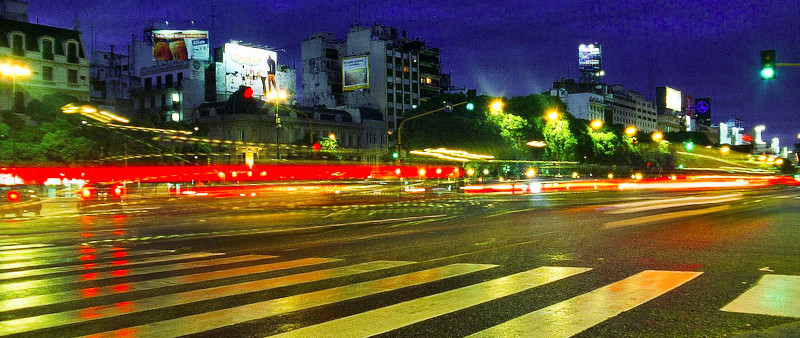
Ave 9 de Julio, as wide as a river, 4 Carriageways, 16 lanes across plus two bus lanes and takes two cycles of pedestrian signals to walk cross unless you sprint… I turned right and past the giant satanic looking obelisk reminiscent of the one in Washington DC. Whatever it was meant to symbolise, it told me my turning was just half a dozen blocks away and I carefully scanned the signs while calculating the lane needed to make the turning. The central carriageways are forbidden to turn. You have to exit to the outer carriageway. The left lane of the furthest carriageway to the right provides the option to turn left across the vast traffic flow and central bus lanes under the safety of green lights.

Av. Hipólito Yrigoyen. I was home dry. Portal Del Sur there on the left: antique carved doorway gave no clues to what lay behind it. The road surface looked rough and empty of traffic. It didn’t look safe to leave the bike parked here, looking so conspicuous and exposed. I unloaded the bike, glad I’d booked ahead so they knew my situation without me having to struggle to explain through the entrance intercom.
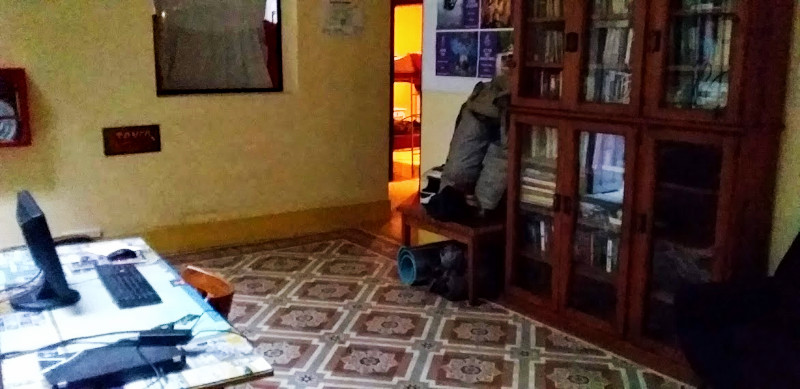
I propped the door open and stacked the luggage inside the entrance between the door and the Art Deco wrought iron elevator surrounded by a marble staircase. It looked like something from an Agatha Christie movie set. Gloves, where’re my gloves? They must have worked loose from under the bungee cord and be laying dead in the Buenos Aires streets somewhere. Well, I guess I wouldn’t need any until I leave. Once everything was indoors I closed the door, transferred everything to the elevator, unloaded it all at reception and quickly booked in.
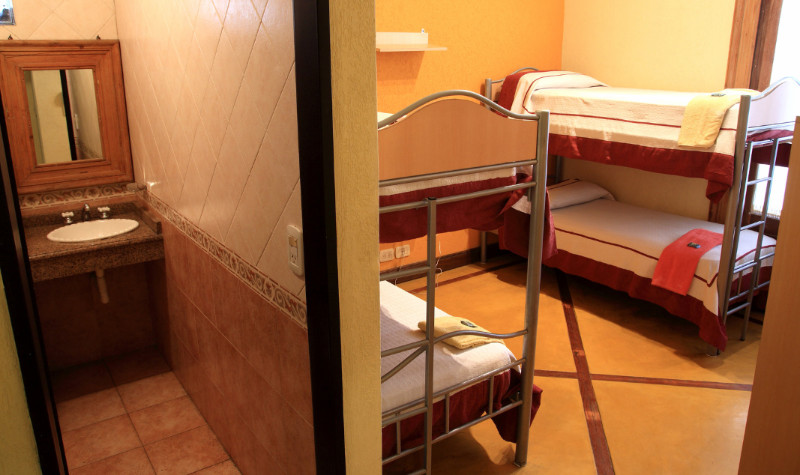
Right across the road stood an Estacionamiento where I could park in their basement for 140 pesos a day. Not too bad for secure parking in a capital city, although a blow to my tight budget. Bike tucked safely away and a four-bed dorm to myself for the night, I stashed my luggage and hung the tent over the wardrobe doors to dry.
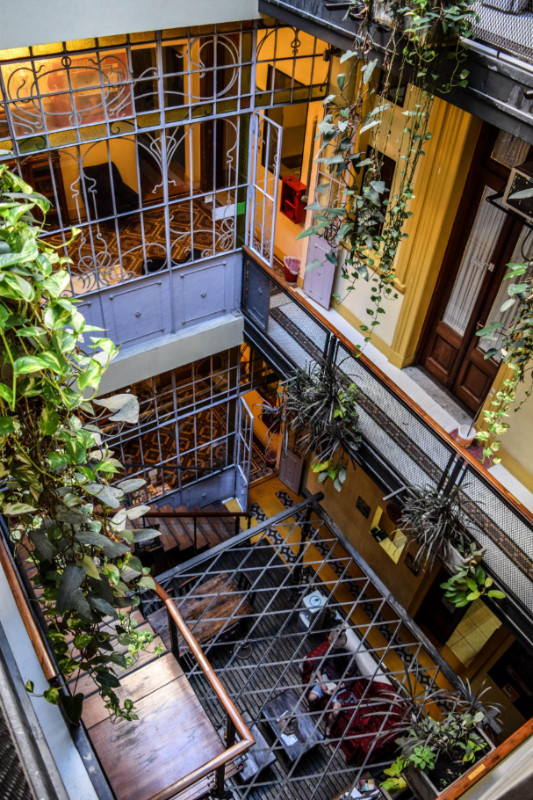
I wouldn’t say I was a city person, but after a long spell in the countryside, I got to appreciate the comforts of ‘civilisation.’ It takes a while to get used to the muted city roar just outside the window… tonight it wouldn’t be a problem. The mental toll of battling city traffic in central Buenos Aires had been tiring enough to encourage a decent night’s sleep.


